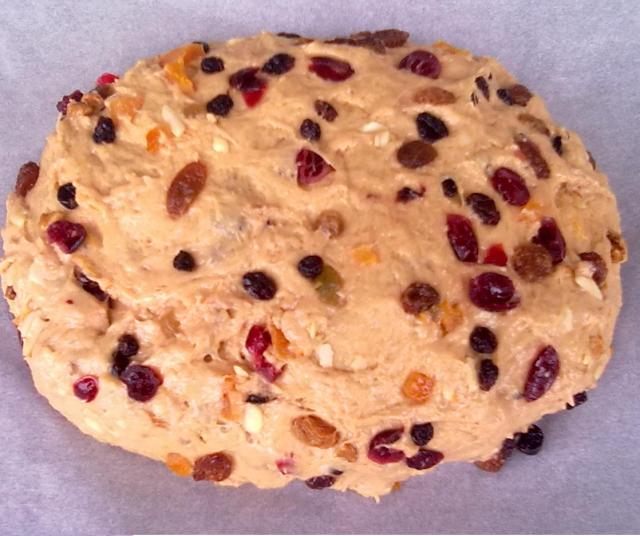Danielle Lachana
Travelling north-west we now arrive in the area of former Yugoslavia where, for the Christmas period we will make a brief stop in Croatia, with a promise to return to the other Mediterranean destinations of the former country at a later date.
Most regions of the former Yugoslavia, not only Croatia, make their own version of either a ''Christmas Eve Bread'' (Badnji kruh) or a ''Christmas Bread'' (Bozicni kruh) - some of which are also known as ''money bread'' - especially the plaited and wreath-shaped varieties (Bozic pletenica) since a coin is hidden inside them, the finder of which is ensured good luck and health.
These festive breads range from the fairly plain to the richer, fruit-laden ones, such as the one I will share with you below. There is plenty of scope for you to use your own preferred combination of 'additions'. I like to use brown sugar for added flavour, but traditionally white is used. I also soak the dried fruits in brandy or dark sherry instead of the more frequently used rum. If you do not want to use alcohol, you can substitute lemon juice diluted with water or plain water.
***
RECIPE

METHOD
Put the mixed dried fruits in a bowl and soak for at least two hours (but preferably overnight) in the alcohol or lemon juice/water. You do not need to soak the candied fruits but roll the glacé cherries (if using) in some flour which prevents them from sinking in the cake. Set aside.
Pour the warm milk into a small bowl and stir in the 2 tsp sugar, yeast and warm water.
In a large bowl, beat together (by hand or electric mixer) the butter with the brown sugar until well creamed then add the egg and vanilla essence and continue to mix until combined. Do not worry if the mixture curdles at this point, it will not affect the finished result.
Add the yeast mixture. Sieve the flour and cinnamon or nutmeg together and add to the bowl. Knead together (by hand or with a mixer dough hook, slowly at first then increasing speed) until smooth but not too sticky. The dough should have come away from the sides of the bowl.
Transfer to a lightly greased bowl, cover with a clean tea cloth/towel and leave in a warm place to rise until doubled in size (1 to 1 1/2 hours.
Punch down the dough and knead in the soaked dried fruits and the candied fruits together with the almonds, or other nuts.

Shape into a ''loaf'' and put on a baking tray that has been lined with baking paper. Cover with the tea cloth and leave to rise again in a warm place for around 30 to 45 minutes.
Bake in a moderate preheated oven at 180 C (350 F, Gas Mark 4 ) for about 50 minutes until golden brown. To test if the cake is done, it should sound hollow when tapped and a skewer or toothpick inserted into the centre should come out clean.
Remove from the oven and put on a wire rack still on the baking paper. After 10 minutes remove the paper and put the cake back on the rack.

Brush the top and sides of the hot bread with melted butter then dust with sieved icing sugar until well coated. (You can dust again with icing sugar, if liked, when cold). Leave the cake on the rack until cold before slicing.
This cake will keep well for several days if tightly wrapped in aluminium foil - but may need redusting with icing sugar before serving.
Dobar tek! (Enjoy!)